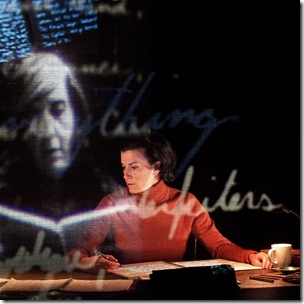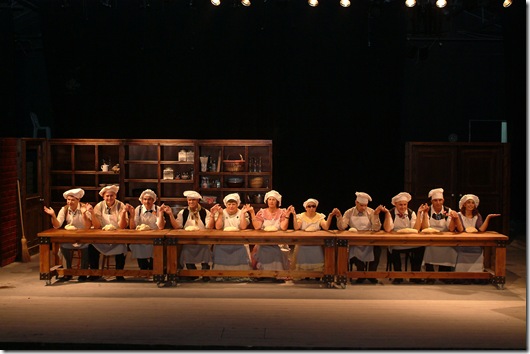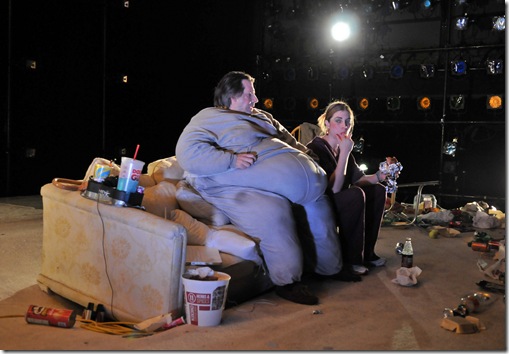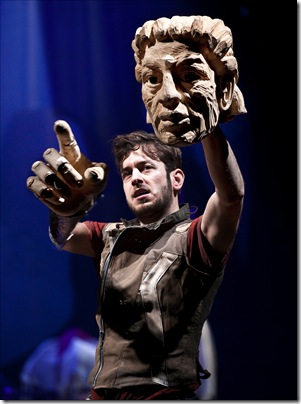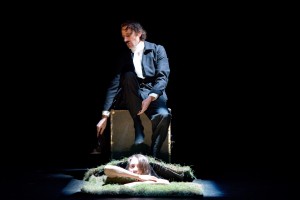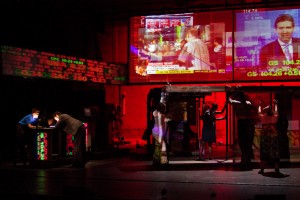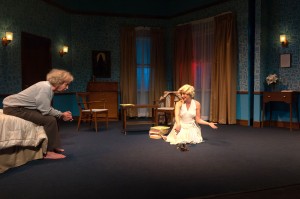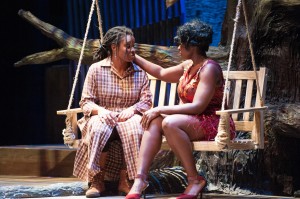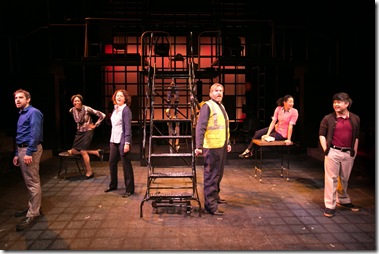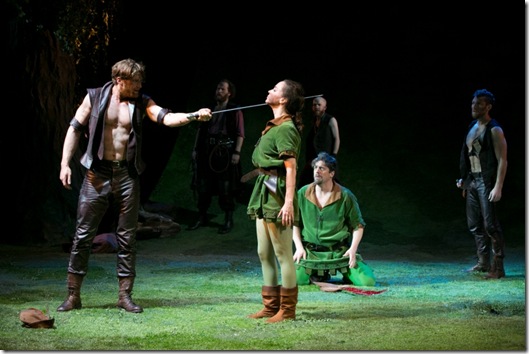Sontag: Reborn: A History Lesson in Multimedia at ArtsEmerson’s Paramount Theatre
Moe Angelos as Susan Sontag. Photo James Gibbs
Sontag: Reborn, the second production the Builders Association has brought to ArtsEmerson this season is another intermedial piece. Like its predecessor, Sontag: Reborn relies heavily on video to tell its story. Unlike its predecessor, House Divided, a drama of many characters, complex setting, and numerous incidents that revolve around the Great Depression and the Great Recession, Sontag: Reborn is a dialogue with one character.
Joshua Higgason’s simple setting, consisting of a wide rectangular desk covered with various and changing props, a scrim in front of it and a screen behind with a camera above; Laura Mroczkowski’s varied lighting; Dan Dobson’s sound design; and Austin Switser’s brilliant video work bring vivid life to a piece that had the potential to bore.
